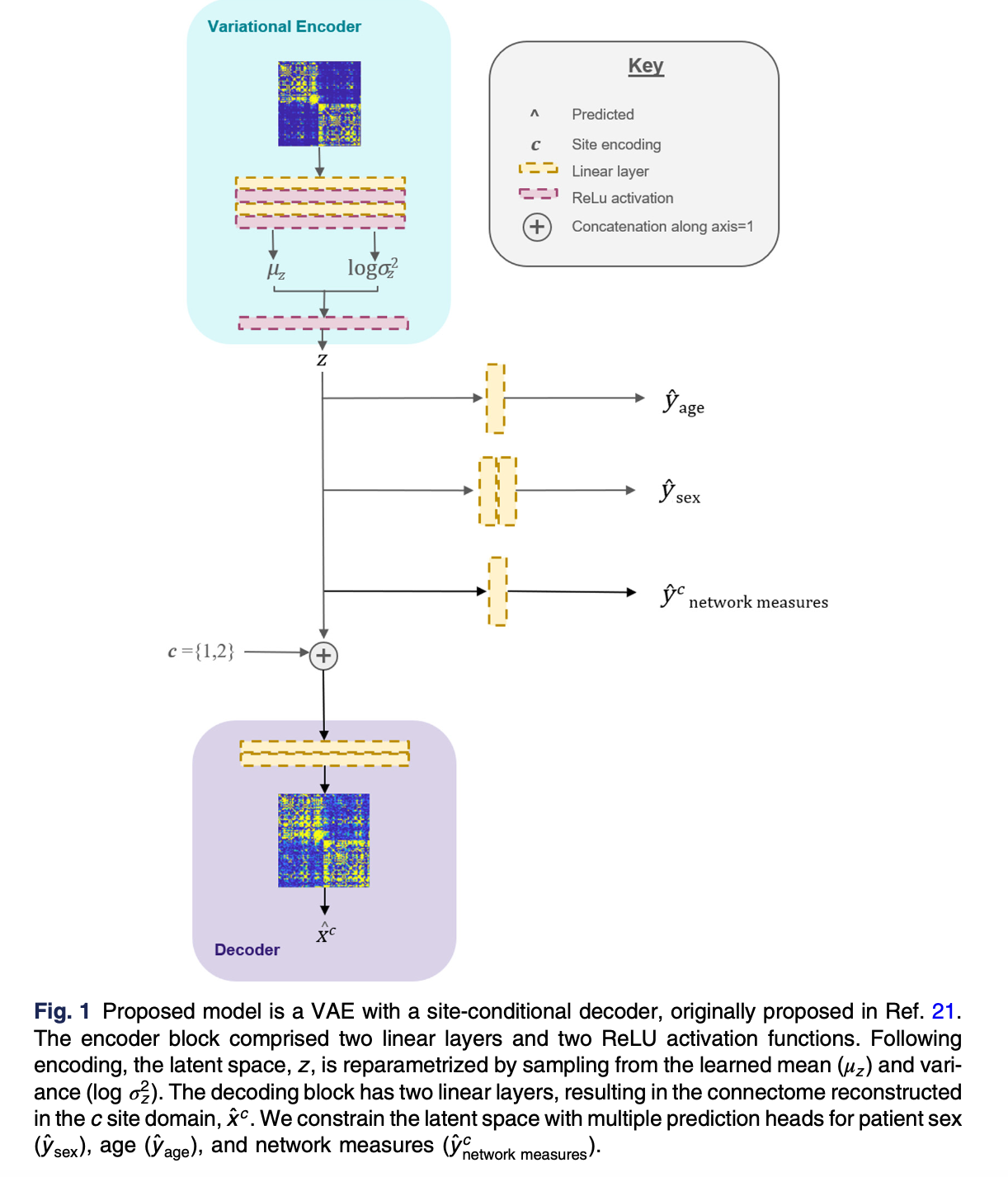Newlin, Nancy R.; Kim, Michael E.; Kanakaraj, Praitayini; Pechman, Kimberly; Shashikumar, Niranjana; Moore, Elizabeth; Archer, Derek; Hohman, Timothy; Jefferson, Angela; Moyer, Daniel; Landman, Bennett A. “Learning disentangled representations to harmonize connectome network measures.” Journal of Medical Imaging, vol. 12, no. 1, 2025, 14004, https://doi.org/10.1117/1.JMI.12.1.014004.
Connectome network metrics are often considered key indicators of brain health, and changes in these metrics have been linked to conditions like Alzheimer’s disease, multiple sclerosis, and brain injuries. However, these metrics are not directly measured—they are estimated through complex processes that involve analyzing brain images, which can be influenced by factors like the imaging methods used and the software applied. This can lead to differences in results depending on the site where the data is collected.
Recent advances in machine learning techniques offer a way to separate the factors that affect these measurements, such as variations between imaging sites, from the underlying biological factors. While these techniques have been used to detect brain abnormalities and analyze other types of brain data, their potential for improving the analysis of brain network data has not been fully explored. In this study, we applied a method called a conditional variational autoencoder to create consistent representations of brain networks, which allows for the comparison of brain network measures across different sites.
To test this, we conducted a study with 823 patients from two different sites, focusing on aging. Our results showed that this approach effectively removed site-specific differences, allowing for more accurate comparisons of brain networks. We also found that the method preserved important relationships between brain network measures, age, and sex, making it a powerful tool for harmonizing brain data from multiple sites. Overall, our findings suggest that using advanced machine learning techniques can improve the consistency and reliability of brain network measurements across different research sites.
